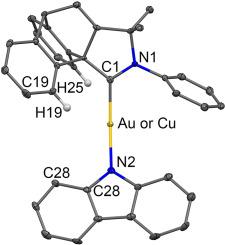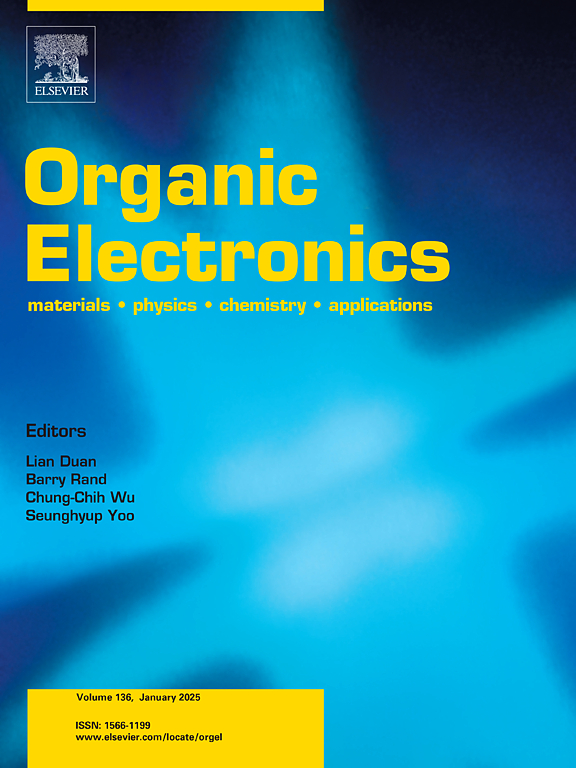环(氨基)(桶烯)碳烯金属酰胺配合物:合成与热激活延迟荧光
IF 2.6
4区 工程技术
Q3 MATERIALS SCIENCE, MULTIDISCIPLINARY
引用次数: 0
摘要
基于环(氨基)(桶烯)碳(CABC)配体的碳金属酰胺 (CMA) 复合物已被制备成铜(I)和金(I)金属中心。基于传统和微波加热的合成方案使 CMA 材料的反应时间缩短了十倍,产量也很高。最低未占分子轨道(LUMO)的稳定对电子和光物理特性产生了影响。这些材料的激发态寿命短至 0.9 μs,光致发光量子产率高达 66%。非辐射过程被揭示出来,并与 CABC 碳烯配体中芳基的旋转自由度有关。利用稳态和时间分辨光致发光光谱估算出单线和三线电荷转移(CT)激发态之间的活化能垒为 83 meV。不同温度下的光致发光证实,即使在 18 K 时,3CT 光致发光仍然存在,而局部激发的三重态 3LE 没有任何贡献。分子设计规则得到了改进,从而提出了明亮的热激活延迟荧光(TADF)CMA 发光体。本文章由计算机程序翻译,如有差异,请以英文原文为准。

Cyclic(amino)(barrelene)carbene metal amide complexes: Synthesis and thermally activated delayed fluorescence
Carbene-metal-amide (CMA) complexes based on cyclic(amino)(barrelene)carbene (CABC) ligands have been prepared for both Cu(I) and Au(I) metal centres. Synthetic protocols based on the conventional and microwave heating enabled ten-fold shorter reaction times and high yields of the CMA materials. Stabilization of the lowest unoccupied molecular orbital (LUMO) effects the electronic and photophysical properties. These materials benefit from short excited state lifetimes down to 0.9 μs and photoluminescence quantum yields up to 66 %. Nonradiative processes are revealed and associated with the rotational freedom of the aryl moiety in the CABC carbene ligand. Steady-state and time-resolved photoluminescence spectroscopy was used to estimate an activation energy barrier of 83 meV between singlet and triplet charge transfer (CT) excited states. Varied temperature photoluminescence confirms that 3CT photoluminescence remains even at 18 K, with no contribution from locally excited triplet states 3LE. Molecular design rules have been enhanced to propose bright thermally activated delayed fluorescence (TADF) CMA emitters.
求助全文
通过发布文献求助,成功后即可免费获取论文全文。
去求助
来源期刊

Organic Electronics
工程技术-材料科学:综合
CiteScore
6.60
自引率
6.20%
发文量
238
审稿时长
44 days
期刊介绍:
Organic Electronics is a journal whose primary interdisciplinary focus is on materials and phenomena related to organic devices such as light emitting diodes, thin film transistors, photovoltaic cells, sensors, memories, etc.
Papers suitable for publication in this journal cover such topics as photoconductive and electronic properties of organic materials, thin film structures and characterization in the context of organic devices, charge and exciton transport, organic electronic and optoelectronic devices.
 求助内容:
求助内容: 应助结果提醒方式:
应助结果提醒方式:


